- Home
- Michael Chabon
Bookends Page 3
Bookends Read online
Page 3
Thus, while claiming, on the one hand, a dubiously ahistorical, archetypical source for the superhero idea in the Jungian vastness of legend, we dissolve its true universality in a foaming bath of periodized explanations, and render the superhero and his costume a time-fixed idea that is always already going out of fashion. When in fact the point of origin is not a date or a theory or a conjunction of cultural trends but a story, the intersection of a wish and the tip of a pencil.
A FAITHFUL SCALE MODEL OF NOTHING
NOW THE TIME HAS COME TO PROPOSE, OR CONFRONT, A FUNDAMENTAL truth: like the being who wears it, the superhero costume is, by definition, an impossible object. It cannot exist. One may easily find suggestive evidence for this assertion at any large comic book convention by studying the spectacle of the brave and bold convention attendees, those members of the general comics-fan public who show up in costume and go shpatziring around the ballrooms and exhibition halls dressed as Wolverine, say, or the Joker’s main squeeze, Harley Quinn. Without exception, even the most splendid of these getups is at best a disappointment. Every seam, every cobweb strand of duct-tape gum, every laddered fishnet stocking or visible ridge of underpants elastic—every stray mark, pulled thread, speck of dust—acts to spoil what is instantly revealed to have been, all along, an illusion.
The appearance of realism in a superhero costume made from real materials is generally recognized to be difficult to pull off, and many such costumes do not even bother to simulate the presumable effect on the eye and the spirit of the beholder were Black Bolt to stride, trailing a positronic lace of Kirby crackle, into a ballroom of the Overland Park Marriott. This disappointing air of saggy trouser seats, bunchy underarms, and wobbly shoulder vanes may be the result of imaginative indolence, the sort that would permit a grown man to tell himself he will find gratification in walking the exhibition floor wearing a pair of Dockers, a Jägermeister hoodie, and a rubber Venom mask complete with punched-out eyeholes and a flopping rubber bockwurst of a tongue.
But realism is not, in fact, merely difficult; it is hopeless. A plausibly heroic physique is of no avail in this regard, nor is even the most fervent willingness to believe in oneself as the man or woman in the cape. Even those costumed conventioneers who go all out, working year-round to amass, scrounge, or counterfeit cleverly the materials required to put together, with glue gun, soldering iron, makeup, and needle and thread, a faithful and accurate Black Canary or Ant-Man costume, find themselves prey to forces, implacable as gravity, of tawdriness, gimcrackery, and unwitting self-ridicule. And in the end they look no more like Black Canary or Ant-Man than does the poor zhlub in the Venom mask with a three-day pass hanging around his neck on a lanyard.
This sad outcome even in the wake of thousands of dollars spent and months of hard work given to sewing and to packing foam rubber into helmets has an obvious, an unavoidable, explanation: a superhero’s costume is constructed not of fabric, foam rubber, or adamantium but of halftone dots, Pantone color values, inked containment lines, and all the cartoonist’s sleight of hand. The superhero costume as drawn disdains the customary relationship in the fashion world between sketch and garment. It makes no suggestions. It has no agenda. Above all, it is not waiting to find fulfillment as cloth draped on a body. A constructed superhero costume is a replica with no original, a model built on a scale of x:1. However accurate and detailed, such a work has the tidy airlessness of a model-train layout but none of the gravitas that little railyards and townscapes derive from making faithful reference to homely things. The graphic purity of the superhero costume means that the more effort and money you lavish on fine textiles, metal grommets, and leather trim the deeper your costume will be sucked into the silliness singularity that swallowed, for example, Joel Schumacher’s Batman and Robin and their four nipples.
In fact, the most reliable proof of the preposterousness of superhero attire whenever it is translated, as if by a Kugelmass device, from the pages of comics to the so-called real world can be found in film and television adaptations of superhero characters. George Reeves’s stodgy pajamas-like affair in the old Superman TV series and Adam West’s mod doll clothes in Batman have lately given way to purportedly more “realistic” versions in rubber, leather, and plastic—pseudo-utilitarian coveralls that draw inspiration in equal measure from spacesuits, catsuits, and scuba suits, and from (one presumes) regard for the dignity of actors who have seen the old George Reeves and Adam West shows and would not be caught dead in those glorified Underoos. In its attempts to slip the confines of the paneled page, the superhero costume betrays its nonexistence, like one of those deep-sea creatures that evolved to thrive in the crushing darkness of the seabed so that when you haul them up to the dazzling surface they burst.
One might go further and argue not only that the superhero costume has (and needs) no referent in the world of textiles and latex, but also that, even within its own proper comic book context, it can be said not to exist, not to want to exist—can be said to advertise, even to revel in, its own notional status. This illusionary quality of the drawn costume can readily be seen if we attempt to delimit the elements of the superhero wardrobe, to inventory its minimum or requisite components.
THE SILVER GLUTEAL CLEFT OF THE SPACEWAYS
WE CAN START BY THROWING AWAY OUR MASKS. SUPERMAN, arguably the first and the greatest of all costumed heroes, has never bothered with one, nor have Captain Marvel, Luke Cage, Wonder Woman, Valkyrie, and Supergirl. All those individuals, like many of their peers (Hawkman, Giant-Man), also go around barehanded, which suggests that we can safely dispense with our gauntlets (whether finned, rolled, or worn with a jaunty slash at the cuff). Capes have been an object of scorn among discerning superheroes at least since 1974, when Captain America, having abandoned his old career in protest over Watergate, briefly took on the nom de guerre Nomad, dressed himself in a piratical ensemble of midnight blue and gold, and brought his first exploit as a stateless hero to an inglorious end by tripping over his own flowing cloak.
So let’s lose the cape. As for the boots—we are not married to the boots. After all, Iron Fist sports a pair of kung-fu slippers, the Spirit wears brown brogues, Zatanna works her magic in stiletto heels, and Beast, Ka-Zar, and Mantis wear no shoes at all. Perhaps, though, we had better hold on to our unitards, crafted of some nameless but readily available fabric that, like a thin matte layer, at once coats and divulges the splendor of our musculature. Assemble the collective, all-time memberships of the Justice League of America, the Justice Society of America, the Avengers, the Defenders, the Invaders, the X-Men, and the Legion of Super-Heroes (and let us not forget the Legion of Substitute Heroes), and you will probably find that almost all of them, from Nighthawk to the Chlorophyll Kid, arrive wearing some version of the classic leotard-tights ensemble. And yet—not everyone. Not Wonder Woman, in her star-spangled hot pants and eagle bustier; not the Incredible Hulk or Martian Manhunter or the Sub-Mariner.
Consideration of the last named leads us to cast a critical eye, finally, on our little swim trunks, typically worn with a belt, pioneered by Kit Walker, the Phantom of the old newspaper strip, and popularized by the super-trendsetter of Metropolis. The Sub-Mariner wears nothing but a Eurotrashy green Speedo, suggesting that, at least by the decency standards of the old Comics Code, this minimal garment marks the zero degree of superheroic attire. And yet, of course, the Flash, Green Lantern, and many others make do without trunks over their tights; the forgoing of trunks in favor of a continuous flow of fabric from legs to torso is frequently employed to lend a suggestion of speed, sleekness, a kind of uncluttered modernism. And the Hulk never goes around in anything but those tattered purple trousers.
So we are left with, literally, nothing at all: the human form, unadorned, smooth, muscled, and ready, let’s say, to sail the starry ocean of the cosmos on the deck of a gleaming surfboard. A naked spacefarer, sheathed in a silvery pseudoskin that affords all the protection one needs from radiation and cosmic dust while meeting Code standa
rds by neatly neutering one, the shining void between the legs serving to signify that one is not (as one often appears to be when seen from behind) naked as an interstellar jaybird.
Here is a central paradox of superhero attire: from panther black to lantern green, from the faintly Hapsburg pomp of the fifties-era Legion of Super-Heroes costumes to the “Mad Max” space grunge of Lobo, from sexy fishnet to vibranium—for all the mad recombinant play of color, style, and materials that the superhero costume makes with its limited number of standard components, it ultimately takes its deepest meaning and serves its primary function in the depiction of the naked human form, unfettered, perfect, and free. The superheroic wardrobe resembles a wildly permutated alphabet of ideograms conceived only to express the eloquent power of silence.
GOTHAM IS BURNING
A PUBLIC AMNESIA, AN AVOWED LACK OF HISTORY, IS THE STANDARD pretense of the costumed superhero. From the point of view of the man or woman or child in the street, gaping up at the sky and skyscrapers, the appearance of a new hero over Metropolis or New York or Astro City is always a matter of perfect astonishment. There have been no portents or warnings, and afterward one never learns anything new or gains any explanations.
The story of a superhero’s origin must be kept secret, occulted as rigorously from public knowledge as the alter ego, as if it were a source of shame. Superman conceals, archived in the Fortress of Solitude and accessible only to him, not only his own history—the facts and tokens of his birth and arrival on Earth, of his Smallville childhood, of his exploits and adventures—but the history of his Kryptonian family and, indeed, of his entire race. Batman similarly hides his story and its proofs in the trophy chambers of the Batcave.
In theory, the costume forms part of the strategy of concealment. But in fact the superhero’s costume often functions as a kind of magic screen onto which the repressed narrative may be projected. No matter how well he or she hides its traces, the secret narrative of transformation, of rebirth, is given up by the costume. Sometimes this secret is betrayed through the allusion of style or form: Robin’s gaudy uniform hints at the murder of his circus-acrobat parents, Iron Man’s at the flawed heart that requires a life-support device, which is the primary function of his armor.
More often, the secret narrative is hinted at with a kind of enigmatic, dreamlike obviousness right on the hero’s chest or belt buckle, in the form of the requisite insignia. Superman’s “S,” we have been told, only coincidentally stands for Superman: in fact, the emblem is the coat of arms of the ancient Kryptonian House of El, from which he descends. A stylized bat alludes to the animal whose chance flight through a window sealed Bruce Wayne’s fate; a lightning bolt encapsulates the secret history of Captain Marvel; an eight-legged glyph immortalizes the bug whose bite doomed Peter Parker to his glorious and woebegone career.
We say “secret identity” and adopt a series of cloaking strategies to preserve it, but what we are actually trying to conceal is a narrative: not who we are but the story of how we got that way—and, by implication, of all that we lacked, and all that we were not, before the spider bit us. Yet our costume conceals nothing, reveals everything: it is our secret skin, exposed and exposing us for all the world to see. Superheroism is a kind of transvestism; our superdrag serves at once to obscure the exterior self that no longer defines us while betraying, with half-unconscious panache, the truth of the story we carry in our hearts, the story of our transformation, of our story’s recommencement, of our rebirth into the world of adventure, of story itself.
MY SECRET ORIGIN
I BECAME AZTEC IN THE SUMMER OF 1973, IN COLUMBIA, Maryland, a planned suburban utopia halfway between Smallville and Metropolis. It happened one summer day as I was walking to the swimming pool with a friend. He wore a pair of midnight-blue bathing trunks; my trunks were loud, with patches of pink, orange, gold, and brown overprinted with abstract patterns that we took for Aztec (though they were probably Polynesian). In those days, a pair of bathing trunks did not in the least resemble the baggy board shorts that boys and men wear swimming today. Ours were made of stretchy polyester double knit that came down the thigh just past the level of the crotch, and fashion fitted them with a sewn-on, false belt of elastic webbing that buckled at the front with a metal clasp. They looked, in other words, just like the trunks favored by costumed heroes ever since the last son of Krypton came voguing down the super-catwalk, back in 1938. Around our throats we knotted our beach towels (his was blue, mine a fine 1973 shade of burnt orange), those enchanted cloaks whose power Mr. Spector had failed to understand or to recall from his own childhood. They fluttered out behind us, catching the breeze from our imaginations, as Darklord and Aztec walked along.
Darklord carried a sword, and wore a Barbuta helmet, with a flowing crusader cloak and invulnerable chain mail of “lunar steel.” Aztec wore tights and a feathered cloak and wielded a magic staff tipped with obsidian. We had begun the journey that day, through the street-melting, shimmering green Maryland summer morning, as a pair of lonely boys with nothing in common but that loneliness, which we shared with Superman and Batman, who shared it with each other—a fundamental loneliness and a wild aptitude for transformation. But with every step we became Darklord and Aztec a little more surely, a little more irrevocably, transformed by the green-lantern rays of fancy, by the spider bite of inspiration, by the story we were telling each other and ourselves about two costumed superheroes, about the new selves that had been revealed by our secret skin.
Talking, retying the knots of our capes, flip-flops slapping against the soles of our feet, we transformed not only ourselves. In the space of that walk to the pool we also transformed the world, shaping it into a place in which such things were possible: the reincarnation of an Arthurian knight could find solace and partnership in the company of a latter-day Mesoamerican wizard. An entire world of superheroic adventure could be dreamed up by a couple of boys from Columbia, or Cleveland. And the self you knew you contained, the story you knew you had inside you, might find its way like an emblem onto the spot right over your heart. All we needed to do was accept the standing invitation that superhero comics extended to us by means of a towel. It was an invitation to enter into the world of story, to join in the ongoing business of comic books, and, with the knotting of a magical beach towel, to begin to wear what we knew to be hidden inside us. (2008)
Julius Knipl, Real Estate Photographer, Ben Katchor
LIKE MANY PEOPLE, I WAS FIRST APPRISED OF THE WISTFUL and intrepid pilgrimage on which you are about to embark by Lawrence Weschler in his New Yorker profile of Ben Katchor, creator of the last great American comic strip.
It is a sad duty thus to anoint Julius Knipl, Real Estate Photographer. Perhaps no art form has ever flourished so brilliantly only to decline into such utter debasement, in such a brief period of time, as the newspaper strip. Reading the comics page in 1996, exactly one hundred years after the debut of Outcault’s Yellow Kid, is, for those who still bother, half melancholy habit and half sentimental adherence to duty, a daily running up of a discredited flag in a forsaken outpost of an empire that collapsed.
Weschler’s article dwelt at length, as do most commentators on Katchor, on the artist’s preoccupation with the sensuous residuum of the past, those unexpected revelators of the all-but-forgotten, encountered in the stairwell of a hard-luck office building or on the dusty shelves of a decrepit pharmacy, those stray remnants of an earlier time that are hinted at in the surname of his protagonist, the stoop-shouldered wanderer, meditative soul, and former dance instructor Mr. Julius Knipl. And it is true that celebration of the chance survival, the memory wrapped like a knipl, or nest egg, in a beaded purse of forgetfulness, discovered in the back of a drawer, is the most immediately striking and perhaps the most accessible aspect of the strip. It was this aspect, initially, that led me to track down Katchor’s first collection of strips, Cheap Novelties, and—the spell was on me now—to take out a subscription to Forward, currently the flagship paper of
the scattershot and fluctuating Knipl syndicate. I’m a sucker, myself, for such chance survivals, because as I’ve confessed elsewhere I suffer intensely from bouts, at times almost disabling, of a limitless, all-encompassing nostalgia, extending well back into the years before I was born.
The mass synthesis, marketing, and distribution of versions and simulacrums of an artificial past, perfected over the last thirty years or so, has ruined the reputation and driven a fatal stake through the heart of nostalgia. Those of us who cannot make it from one end of a street to another without being momentarily upended by some fragment of outmoded typography, curve of chrome fender, or whiff of lavender hair oil from the pate of a semi-retired neighbor are compelled by the disrepute into which nostalgia has fallen to mourn secretly the passing of a million marvelous quotidian things.
The erasure of the past, and its replacement by animatronic replicas, politicians’ narratives, and the fictions of advertisers, coupled with the explosive proliferation of new inventions and altered mores, ought to have produced a boom time for honest mourners of the vanished. Instead we find ourselves haunting the margins of a world loud with speculators in metal lunch boxes and Barbie dolls, postmodernists, and retro-rockers, quietly regretting the alternate chuckling and sighs of an old-style telephone when you dialed it. We are not, as our critics would claim, necessarily convinced that things were once better than they are now, nor that we ourselves, our parents, or our grandparents were happier “back then.” We are simply like those savants in the Borges story who stumble upon certain objects and totems that turn out to be the random emanations and proofs of the existence of Tlön. The past is another planet; anyone ought to wonder, as we do, at any traces of it that turn up in this.

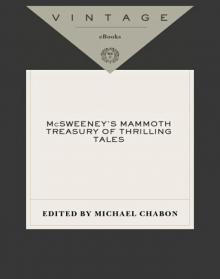 McSweeney's Mammoth Treasury of Thrilling Tales
McSweeney's Mammoth Treasury of Thrilling Tales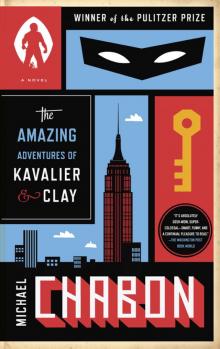 The Amazing Adventures of Kavalier & Clay
The Amazing Adventures of Kavalier & Clay The Yiddish Policemen's Union
The Yiddish Policemen's Union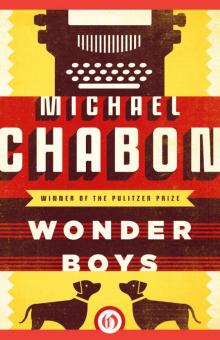 Wonder Boys
Wonder Boys Manhood for Amateurs
Manhood for Amateurs Kingdom of Olives and Ash: Writers Confront the Occupation
Kingdom of Olives and Ash: Writers Confront the Occupation Gentlemen of the Road: A Tale of Adventure
Gentlemen of the Road: A Tale of Adventure A Model World and Other Stories
A Model World and Other Stories Pops: Fatherhood in Pieces
Pops: Fatherhood in Pieces McSweeney's Enchanted Chamber of Astonishing Stories
McSweeney's Enchanted Chamber of Astonishing Stories Summerland
Summerland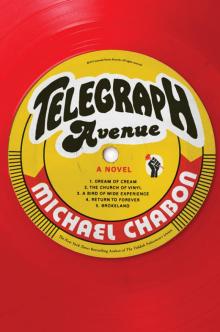 Telegraph Avenue
Telegraph Avenue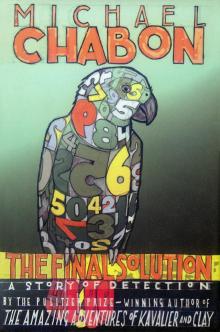 The Final Solution
The Final Solution The Mysteries of Pittsburgh
The Mysteries of Pittsburgh Werewolves in Their Youth
Werewolves in Their Youth Bookends
Bookends Fight of the Century
Fight of the Century Maps and Legends
Maps and Legends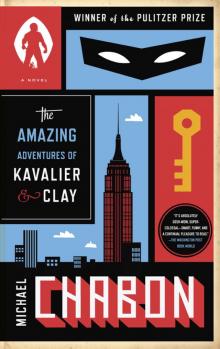 The Amazing Adventures of Kavalier & Clay (with bonus content)
The Amazing Adventures of Kavalier & Clay (with bonus content) Kingdom of Olives and Ash
Kingdom of Olives and Ash Pops
Pops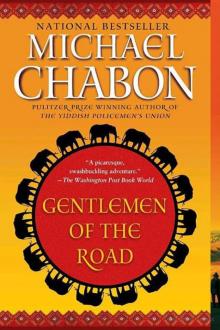 Gentlemen of the Road
Gentlemen of the Road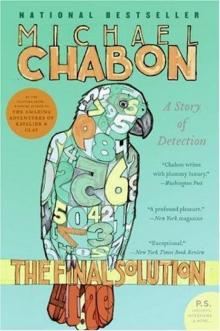 The Final Solution: A Story of Detection
The Final Solution: A Story of Detection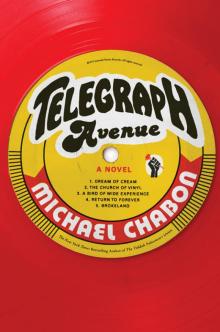 Telegraph Avenue: A Novel
Telegraph Avenue: A Novel